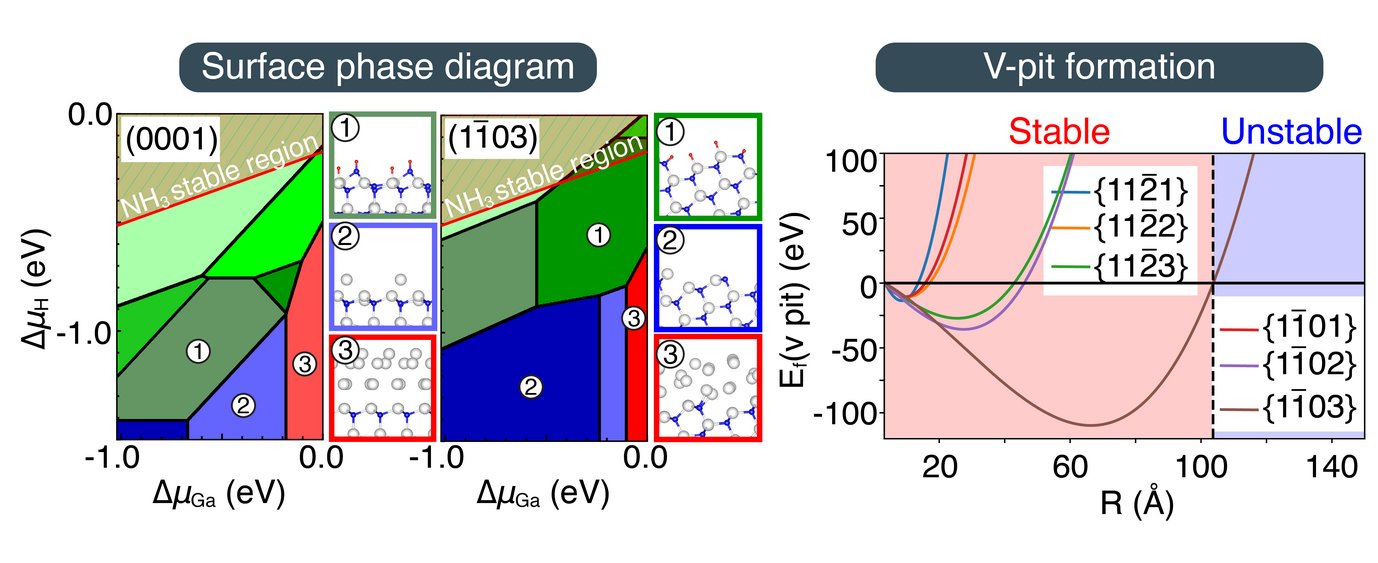Growth and Properties of V-pit Defects on Wurtzite GaN Polar Surfaces
The fundamental mechanisms of V-pits formation on epitaxially grown GaN polar surfaces are investigated combining state-of-the-art first-principles calculations and elasticity theory.
Controlling surface defects is a key to reducing efficiency losses in wurtzite GaN-based optoelectronic and power electronic devices. Inverted pyramids or V-pits are a prominent and often observed extended defects in heteroepitaxially grown GaN surfaces. They are widely accepted to be detrimental for opto- and power-electronic devices. V-pits are associated with threading dislocations, can reach lateral sizes as large as a few hundred nms, and are buried inside the buffer layer of the heteroepitaxial structures.
In the present project, we combine first-principles calculations with elasticity theory and investigate thermodynamic stability and growth of V-pits at GaN (0001) surfaces. The nucleation and properties (e.g., size and shape) of these defects are governed by the complex interplay between dislocation’s strain and core energies, surface energies, and oversaturation. A prerequisite to accurately describe the formation of these defects is to obtain their absolute surface energies that constitute the inverted pyramid, i.e., polar, semipolar, and/or non-polar planes. Therefore, in the first step, we calculate roughly 300 different GaN low-index surfaces [(0001), (1-10n), and (11-2n) orientations, where n = 0, …, 3] with employing our recently developed methodologies, which allows us to identify accurate surface energetics1, 2.

Based on the above mentioned calculations, we identify accurate surface energies, electronic properties, and Wulff shapes as function of the growth conditions. Moreover, a V-pit phase diagram, which describes the equilibrium size and shape of V-pits as a function of the growth conditions, i.e., the Ga and H chemical potentials, is constructed. This diagram reveales that flat (0001) GaN surfaces are intrinsically unstable against the formation of V-pits at the site where screw threading dislocations pin the surface under typical MOCVD growth conditions.

References

Part of this project has received funding from the ECSEL Joint Undertaking (JU) project UltimateGaN under grant agreement No 826392. The JU receives support from the European Union’s Horizon 2020 research and innovation program and Austria, Belgium, Germany, Italy, Slovakia, Spain, Sweden, Norway, Switzerland.


